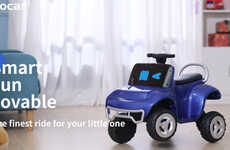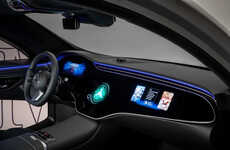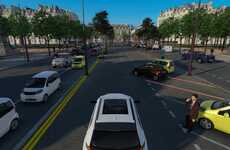
'CARLA' is an Open-Source Tool for Autonomous Driving Research
Colin Smith — July 3, 2024 — Autos
The CARLA simulator is an open-source platform designed to facilitate the development, training, and validation of autonomous driving systems. Developed from the ground up, CARLA provides a comprehensive suite of tools and assets, including urban layouts, buildings, and vehicles, which can be freely used by researchers and developers. The platform supports the flexible specification of sensor suites and environmental conditions, allowing users to simulate a wide range of driving scenarios and conditions.
One of the key features of CARLA is its scalability, achieved through a server multi-client architecture that enables multiple clients to control different actors within the simulation. The simulator also offers a powerful API that allows users to manage various aspects of the simulation, such as traffic generation, pedestrian behaviors, and weather conditions. Additionally, CARLA supports the integration of diverse sensor suites, including LIDARs, multiple cameras, depth sensors, and GPS, which are essential for developing and testing autonomous driving technologies.
CARLA’s functionality extends to the creation and execution of traffic scenarios through its ScenarioRunner engine, which allows users to define and simulate different traffic situations based on modular behaviors. The platform also integrates with the Robot Operating System (ROS) via a ROS-bridge, facilitating seamless connection and interaction with ROS-based systems. Furthermore, CARLA provides autonomous driving baselines, including runnable agents like the AutoWare agent and the Conditional Imitation Learning agent, which serve as benchmarks for evaluating autonomous driving performance.
Image Credit: Carla
One of the key features of CARLA is its scalability, achieved through a server multi-client architecture that enables multiple clients to control different actors within the simulation. The simulator also offers a powerful API that allows users to manage various aspects of the simulation, such as traffic generation, pedestrian behaviors, and weather conditions. Additionally, CARLA supports the integration of diverse sensor suites, including LIDARs, multiple cameras, depth sensors, and GPS, which are essential for developing and testing autonomous driving technologies.
CARLA’s functionality extends to the creation and execution of traffic scenarios through its ScenarioRunner engine, which allows users to define and simulate different traffic situations based on modular behaviors. The platform also integrates with the Robot Operating System (ROS) via a ROS-bridge, facilitating seamless connection and interaction with ROS-based systems. Furthermore, CARLA provides autonomous driving baselines, including runnable agents like the AutoWare agent and the Conditional Imitation Learning agent, which serve as benchmarks for evaluating autonomous driving performance.
Image Credit: Carla
Trend Themes
1. Open-source Simulation - Increased accessibility of open-source tools like CARLA enables a broader range of developers to contribute to autonomous driving research.
2. Advanced Sensor Integration - The support for diverse sensor suites, including LIDARs and multiple cameras, enhances the fidelity and realism of autonomous driving simulations.
3. Scenario-based Testing - Detailed scenario creation and execution through platforms like ScenarioRunner allows for more comprehensive and varied testing of autonomous driving systems.
Industry Implications
1. Automotive - The automotive industry benefits from precise and scalable simulations to advance the development of autonomous vehicles.
2. Software Development - Software developers gain opportunities to innovate in creating and integrating complex simulations and sensor technologies.
3. Urban Planning - Urban planners can utilize advanced driving simulations to model and optimize traffic patterns and city infrastructures.
7.4
Score
Popularity
Activity
Freshness
















